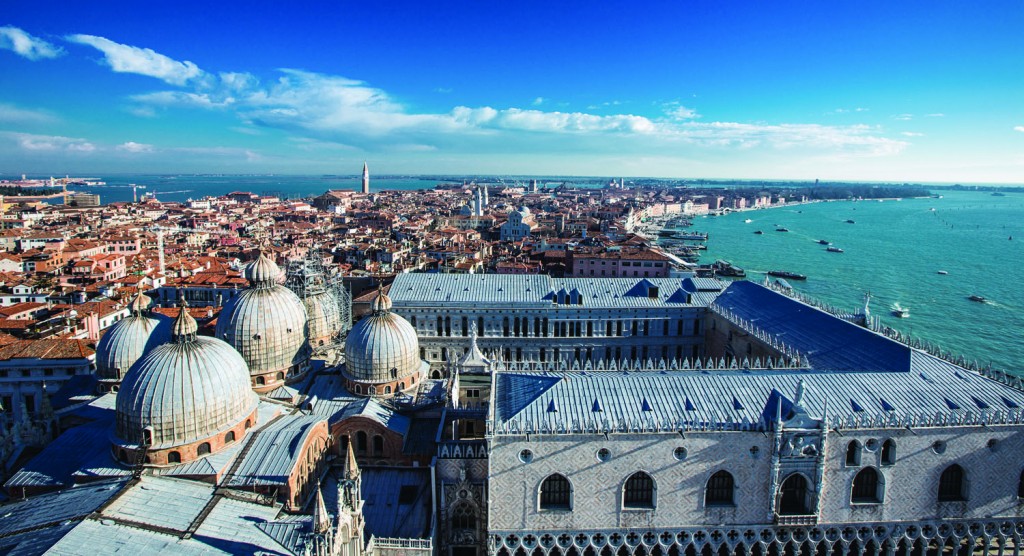The smuggling of the mortal remains of St Mark to Venice from Alexandria in 828 satisfied a Divine Will – according to the Venetian version of the story, anyway…

When, in the 4th Century AD, St Mark the Evangelist allegedly visited the then uninhabited lagoon, an angel appeared unto him saying: “Pax tibi Marce, Evangelista meus!” (Peace to you, Mark, my Evangelist). Justification indeed for the sequestration and subsequent smuggling of the saint’s remains from Alexandria.
The memory of the city’s previous patron saint, Teodoro, was relegated to a statue, while Venice, now in possession of some of the most important religious relics in the world, was able to expand its influence to Grado and Aquileia.
The present Basilica of St Mark is the third incarnation of the church; the first was commissioned by Doge Giustiniano Partecipazio to commemorate the arrival in Venice of the relics of St Mark; the second was commissioned by Doge Pietro Orseolo in the 10th Century, following a fire in 976. Then, in 1063, under Doge Domenico Contarini, it was decided to rebuild the church – on the same Greek cross plan as the previous one, but to a much larger scale. The building work was completed by the end of that century and the church was consecrated, though the decorative work continued until the beginning of the 19th century.
In 1807, after the Napoleonic invasion, the church replaced the cathedral of San Pietro di Castello as the seat of the Patriarch of Venice. The Basilica is known as the ‘Church of Gold’ for its Pala d’Oro, an altar screen decorated with thousands of precious stones and enamel icons inlaid with gold. Ordelaffo Falier commissioned the first altarpiece in the 12th Century; then, in the 13th Century a new piece was fitted by Pietro Ziani with spoils from the conquest of Constantinople.
